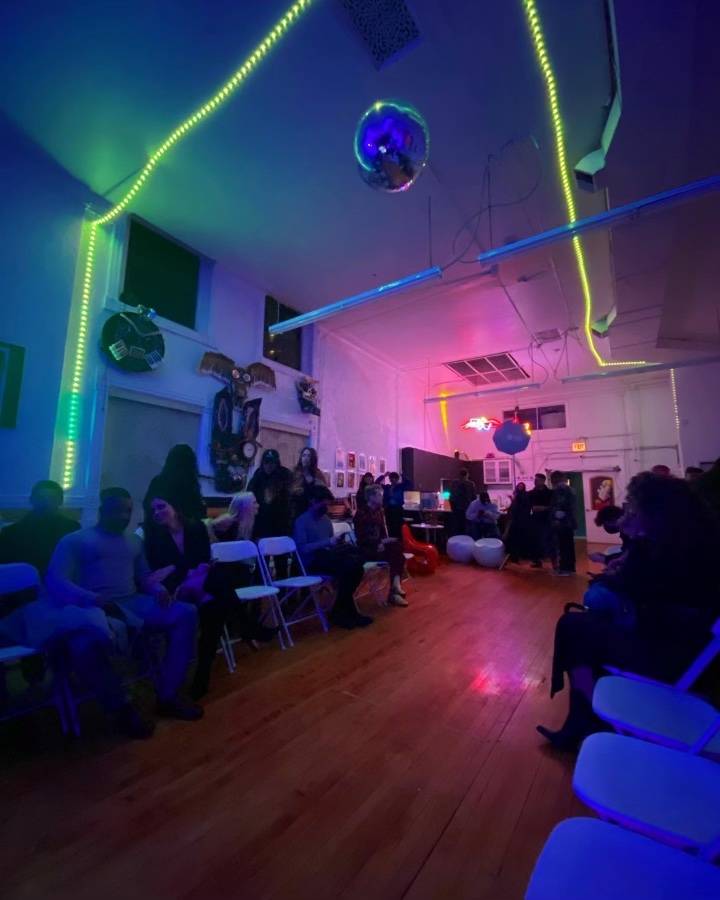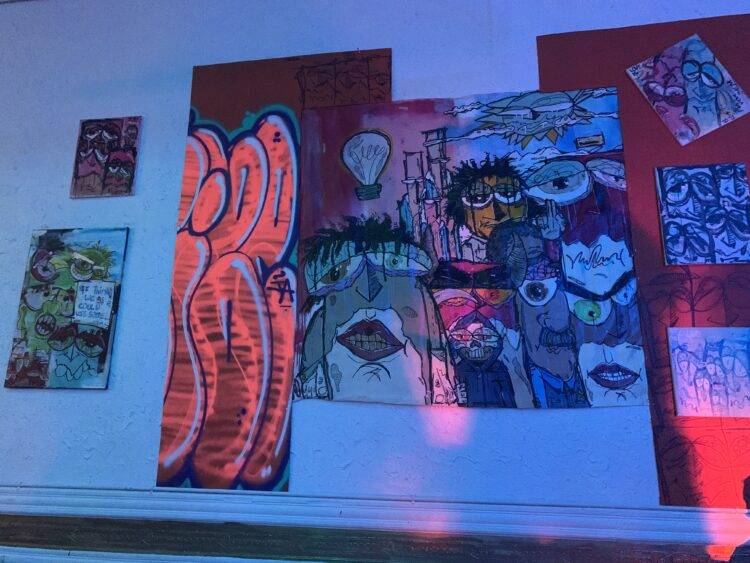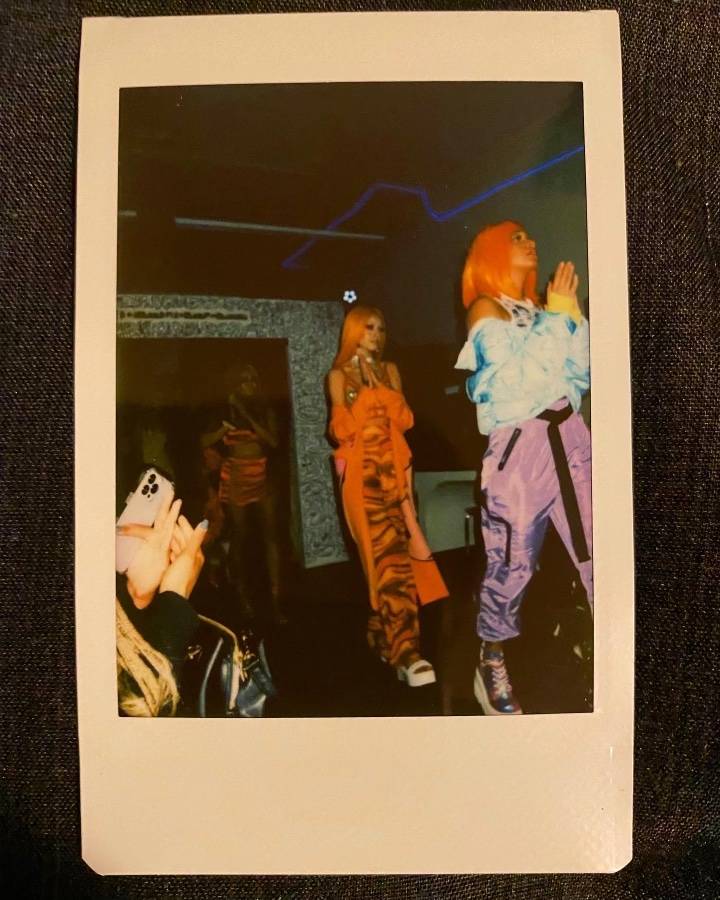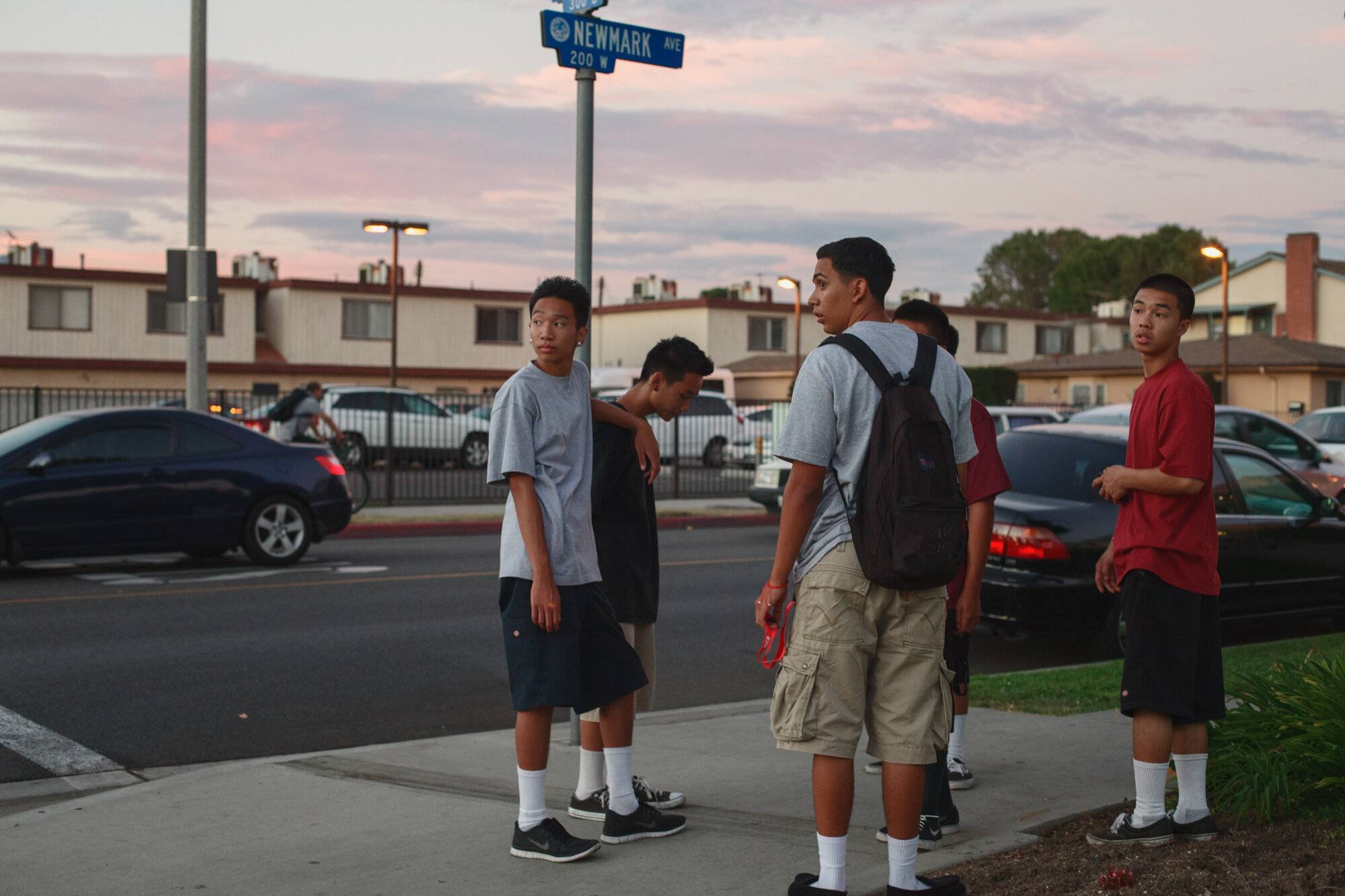
To attend Chicago’s Fashion Show on April 8th, you couldn’t arrive just to spectate. The expectations for the guests were written in the dress code: Dress to impress. No gym shoes. No jeans. But most importantly? Be extra.
Photographer MomMo Justo and musician Marked Since Day 1 collaborated again this spring to put on their second annual fashion show, and this year promised to be more over-the-top than the last, full of dynamic creativity from artists across many mediums. Doors opened at 8 p.m. and closed at 9 p.m. Though the actual start time wasn’t listed, the message was clear. Show up and show off, or be left out.
I dove to the back of my closet and pulled the most extra item of clothing I have — a baby-pink mesh shirt shirt with puffy sleeves — and paired it with and black and white plaid pants. After feeling an urge to tone down my outfit, I realized that my look was perfect and left for the show.
I arrived at TribeHouse Chicago a few minutes after 8 p.m. From the front, the venue looked like the entrance to an apartment building. After unknowingly walking past it multiple times, I decided to follow a group of well-dressed people who seemed to be in the know. Inside the building was a winding, wooden staircase, and on it stood people dressed in all types of attractive looks, from elegant and luxurious formal looks to grunge and artsy. Determining that this was the right place, I placed myself at the end of the line and waited for some time until a security guard finally opened a door at the top of the staircase and gestured for us to come inside. I was prepared to wait longer than expected for the venue to open, but it was nice to see that the Chicago Fashion Show’s interpretation of “fashionably late” was only 23 minutes after what they intended.

We walk inside to a room illuminated by a hypnotizing mix of black light and pink and purple spotlights. The room was longer than it was wide, its walls were lined with pictures of faces drawn and painted in the style of graffiti art, with paint-dripping, unsteady strokes. A large, white box decorated with Sharpie-like scribblings of faces with bug eyes, pouty lips, triangle noses, and jagged teeth stood at one end of the room and a bar stood at the other end. Rows of white folding chairs ran the length of the room between the box and the bar leaving a narrow aisle in the room’s center. As the guests find their seats, a few performers are still scattering around the room, one makeup artist places the finishing touches on a model’s face then ushers her into the box, sealed off with a solid, black curtain, and a few models wearing brightly-colored wigs and satin black robes walking purposefully yet slowly to the box, craning their necks to see who had showed up.
After music performances from up-and-coming Chicago acts Kiraly Payne and Franchise97, the show begins. The seated audience uses the flashlight feature on their phones and aims them downwards, transforming the wooden aisle into a luminous runway. The first models to take the floor are two shirtless men dressed in white pants and white sneakers, their bodies covered in red, yellow, blue, and white paint covered by thick, heavy black lines. They walk across the aisle stoically and powerfully, looking nowhere but straight ahead. At the end of the runway, they freeze with their arms hanging at their sides and their feet shoulder-width apart, and they stay at the end of the runway as the models start to emerge from the box. The painted men occasionally change their poses, sometimes raising a hand above their head in a strong fist, other times clasping their hands around their necks as if to strangle themselves.
“They’re supposed to be Greek statues,” a woman in a sparkly, sequined turquoise puffer jacket tells me. Both stuck at the bar waiting for an appropriate time to ask the bartender for drinks, we strike up a conversation. Her name is Dawneeah. “I’m the face and body painter, I painted the two topless models,” she says. Dawneeah explains that the men are classic sculptures that were given life through exposure to bright colors and now are living pieces of art, and the black lines are like cracks in their otherwise perfect, chiseled surface.

The other models continue to walk down the aisle wearing electric neon colors, and use the men to frame their runway personalities. A woman wearing a white collared shirt, a floor length pink skirt, and a pink scarf glides down the aisle and rests her elbows on the men’s shoulders. She caresses the face of one and warmly runs her hands through the hair of the other before disappearing in the box. A man appears from behind the curtain and confidently walks towards the two men in an oversized orange fuzzy jacket. He takes his jacket off to drape it over the shoulders of the man to his right and crosses his arms across his chest, reminiscent of Marvel’s Black Panther. Once the man walks off, the men adopt his pose as they await the next model. Another model struts down the runway wearing a yellow corset pulled down to reveal their chest. They forcefully grab the mens’ shoulders, glare at the cameras while breathing heavily, and rip off their wig to reveal a pink buzz cut, holding the wig high over their head before sauntering back to the box. The show progresses in this fashion until all the models come pouring out of the box in a single file line, more models than the box seemed capable of containing. The audience rises to their feet and claps as the models take their bows.
Marked Since Day 1 ends the event with a set of electronic rap music, and as the guests push their white chairs against the walls, the wooden floor is transformed for the second time that night, this time from a runway to a dance floor. The event finishes, but the night is far from over. All of the single guests, couples, and friend groups mesh until the people become one chic, chaotic mass. Strangers dance with each other and ask other strangers to take pictures of them. The models joined the party and compliment the outfits of the attendees, and even Justo comes out to mingle with her guests.
Before leaving the event, I look at the party one last time and see the event’s photographers circling the mass of people as they dance and twirl, rap and sing, strike their poses and hit their angles. Now, the audience fully holds the camera’s attention, and they are putting on a great show.
Nadya Kelly (MA New Arts Journalism 2023) has an oboe named Phyllis.







